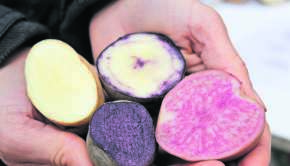heat or cold for muscle pain
Heat therapy can relax and soothe muscles and heal damaged tissue. Taking ice packs or adhesive . However, for some, heat can help by relaxing tense head and neck muscles. Hemorrhoids: Ice, then heat A cold pack will immediately reduce blood flow to the hemorrhoids, which are basically swollen and inflamed veins. Cold reduces inflammation, but heat dilates blood vessels and promotes blood flow. Cold therapy also temporarily reduces nerve activity, which also provides relief from pain. But don't worry, I'll explain all of this below. When To Use Cold: A Cold Compress or Ice Pack work best to relieve pain, swelling and inflammation for new injuries, re-injury and during immediate post surgery recovery. There are several mechanisms by which heat therapy reduces pain and aids in healing. The Pros And Cons Of Using Heat And Cold To Relieve Muscle Pain. Shortly after, the pain or achiness comes back. This can help reduce muscle stiffness or spasms, ease muscle tension (especially when used with stretching exercises), and break up scar tissue that may have formed in injured muscles. Heat therapy works by improving circulation and blood flow to a particular area due to increased temperature. Ice for 20-30 minutes every 3 to 4 hours. A cold pack will immediately reduce blood flow to the hemorrhoids, which are basically swollen and inflamed veins. This technique will increase the blood flow to the site of injury, helping it to heal faster. There is limited evidence from randomized clinical trials (RCTs) supporting the use of cold therapy following acute musculoskeletal injury and delayed-onset muscle soreness (DOMS). Cold Eases pain by numbing the affected area. Immediately after the injury, you may want to apply cold packs for ten minutes every one to two hours to maximize benefits. You should use heat before you do exercise and cold after exercise. Thermotherapy (2) involves the application of gentle heat to stimulate blood flow and circulation in the targeted area, which helps reduce muscle tension and the associated pain. It is worth noting that the use of heat can be effective once the acute phase of the inflammation is over and the healing process begins. It helps to reduce the pain associated with stiff and sore muscles and joints. For the most part, if muscle pain is temporary (or acute) it can be treated with cold compresses for no more than 15 minutes a few times a day and rest to allow tissues to heal. Apply heat on your groin for 20 to 30 minutes every 2 hours for as many days as directed. This significantly reduces swelling or inflammation that causes pain, particularly when applied around a tendon or joint. When you apply heat and cold therapy to painful muscles, it can help relax your muscles and relieve pain. to the surface of the body will . Chiropractors can treat conditions like osteoarthritis, back pain, neck pain, rheumatoid arthritis, and fibromyalgia can be treated with heat or cold. Cold Therapy for Muscle Pain. Generally speaking, cold is recommended: 24 to 72 hours after your initial injury or when you first notice pain and swelling to stop tissue damage, relieve pain, and decrease swelling. 2 For certain types of pain and injuries, you can apply heat to a muscle to warm it up, stretch and strengthen it, and then finish it off with a little ice to cool it down. Hot packs The common source of heat therapy relieves muscles spasms and pain, especially when caused by restless leg syndrome. You should only use a heat pack for 20-30 minutes at a time. Heat is useful for warming up stiff muscles before an activity. Minor stiffness or tension can often be relieved with only 15 to 20 minutes of heat therapy. Although . Heat therapy comes in two forms: moist heat (like a hot bath or towel) and dry heat (heating pad). Dr. Gupta advises using a heating pad in 10-minute intervals for 30 to 60 minutes. But not at the same time. As we increase the temperature, blood flow to the area increases delivering nutrients and oxygen that will aid in the healing and repair of the muscle. It may even help reduce inflammation in your muscle tissues. A hot shower might also be effective. Take care not to sleep off with a hot pad or ice pack to avoid skin injuries. Warm Compress. To deal with pain and inflammation, use an ice pack for 20-30 minute intervals every 4-5 hours. Because the blood supply helps eliminate these chemicals, use heat to help sore muscles after exercise. For example, heat is good for easing your chronic pain and muscle spasms. Heat helps decrease pain and muscle spasms. Heat helps soothe stiff joints and relax muscles. probably a few months I'd hope it would be healed and not be in pain by then! If you decide to use heat to treat your knee, make sure the hot water bottle or heat pack is wrapped in a towel or other material to avoid burns and leave it on the site of your injury for 10-15 minutes. For some it is a genetic condition, for others it is muscular, but applying a steady amount of heat to the affected area can relieve the aching and improve movement, in the case of heat patches, they can provide constant relief throughout the day as the supply of heat can ease pain for up to 16 hours. You'll want to wait 30 minutes to an hour at least. This is probably the most common thing I see. Dr. Chaitow suggests finishing [More] with cold in most instances. Heat therapy can be used for non-inflamed, non-acute body pain. The researchers also noticed that heat wraps had a slight advantage over cold wraps for preserving . However, for some, heat can help by relaxing tense head and neck muscles. (3) As with cold therapy, there are several ways to apply heat to an injury. Avoid activities that cause or increase your pain. Click to read more on it. Applying cold will be effective on an inflammation, like after a strain, a sprain or any violent impact. Applying heat is one method for treated aches and pains. Keep moving. Hemorrhoids Ice, then heat. The application of a hot pack or heating pad, causes the blood vessels in the skin to dilate or "open-up". Cold therapy can also temporarily reduce nerve activity . Applying a cold patch to your lower back before you go to bed if you overexerted your lower back muscles that day. They are great to use because they are both non-invasive and non-addictive pain relievers. 24 to 72 hours after your initial injury or when you first notice pain . Heat relaxes the muscles and reduces pain. Never use extreme heat, and never put ice. Some cases may require alternating with heat and cold therapy. It appears that cold wins out over heat when it comes to treatment for muscle strains. For strength recovery, cold applied after 24 hours was better than heat at 24 hours. Basically, you should apply ice to the muscular injury for the first 48 hours, followed by heat. Whirlpool baths . You May Also Like Alternating heat and cold may help reduce exercise-induced muscle pain. Apply heat either with a heating pad or by using a warm whirlpool bath if one is availableafter a day or two, once the acute pain calms down. Moderate to severe pain can benefit from longer sessions of heat therapy like warm bath, lasting between. Effects of Heat Application What follows is further detail about each of these three therapies. When you apply something hot to your body, the heat receptors in your skin actually partially block out the chemical trails that . Using heat or cold will you relieve the following symptoms: muscle aches, pains, and spasms, lower and upper back pain, swollen, tender, and stiff joints and neck, finger and wrist pain, and knee . Soak a facecloth or towel in hot steaming water, place over affected area, and wait 10 minutes. Lucky for you, heat therapy should be applied longer than cold therapy (so you can rejoice in the soothing heat that much longer). Cold therapy: It has been found that cold applications (ice packs, cold compresses, frozen gel packs, frozen bag of peas, etc.) This means applying heat to your shoulder is good for treating frozen shoulder or stiffness as well as muscle spasms and can really help with arthritis pain. Heat opens blood vessels, which can assist the healing process and alleviate some of your pain. Hot packs, warm water bottles and hot, wet towels are examples of ways to apply heat for shoulder and neck pain. This can be accomplished through ultrasound heat or applying heating pads to the affected area. Heat Therapy Heat is ideal to treat chronic injuries that do not involve inflammation or swelling. muscle pain. Heat increases blood flow to the area, decreasing pain, stiffness and muscle spasms that might also be present. Heat can also help relax tight or spasmed muscles. Reduces bleeding. Hot will be effective for relieving muscle tension, cramps or menstrual pain. The physiological effects of heat therapy include pain relief and increases in blood flow, metabolism, and elasticity of connective tissues. This increases circulation and muscle relaxation, which reduces pain, spasms, and stiffness, says Dr. Gardner.. When Either Heat Or Cold Will Do Soothe aches and pains caused by conditions like osteoarthritis, rheumatoid arthritis, back pain, fibromyalgia, and neck pain with either heat or cold. Heat acts to increase the temperature of the soft tissues, including muscles and tendons. You may use hot showers, hot compresses, or a hot pad. It is generally recommended that you use ice on your neck for the first 24 to 48 hours after sustaining the injury in order to reduce any swelling. Everyone that has muscle pain will tell me 'Doctor, I stretch all day but it only gives me temporary relief.'. Cold therapy helps reduce muscle pain by numbing . . Increasing the temperature of the afflicted area even slightly can soothe discomfort and increase muscle flexibility. Ice, on the other hand, goes well with an acute injury. Use ice for the primary forty-eight to seventy-two hours, and then use heat. Heat treatment promotes blood flow and helps muscles relax. Heat may be helpful if your knee pain is the result of aching muscles from an injury caused by overuse. The treatments may help to improve. At the same time, if the pain is chronic (lasts longer than 6 months) heat is the best bet; it can even be alternated with cold if desired. Be wary of heat in some cases, though: Heat seems to be the best option for treating exercise-related muscle pain, but. Given the two different types of sciatica (entrapment and compression) it's essential that you first determine the origin of the pain. RICE - rest, ice, compression, elevate. The short answer to whether you should use heat or ice on your neck pain isboth. Cold Therapy. Like cold therapy, heat therapy is best applied immediately after a workout. This can be repeated every 2 to 3 hours. Subsequently, one may also ask, is a heating pad good for sore muscles? Try: Keeping a heat patch near your bed in case you wake up with lower back pain. Heat helps soothe sore muscles that cause back pain or neck pain. When you apply heat and cold therapy to painful muscles, it can help relax your muscles and relieve pain. Wait at least an hour before applying the pack again, or you may cause tissue . These include: increasing blood flow to the area increasing oxygen uptake rate reducing joint stiffness It may even help reduce inflammation in your muscle tissues. Cold should also be used during the first 24 - 72 hours of treatment, combined with resting your injury. Heat application reduces pain by bringing more blood flow to the area by vasodilation. Cold therapy works as an anesthetic. "Heat can make inflammation worse, and ice can make muscle tension and spasms worse, so they have the potential to do some mild harm when mixed up," wrote Ingram in a PainScience.com article. Heat increases blood flow to an affected area, which promotes healing and relaxes muscle spasms. You may use the following procedure to reduce neck pain using heat: Apply heat or ice to the painful area. Heat therapy is completely different in that it boosts the blood flow . No idea how long a referral for physio would take! Heat stimulates the blood flow in your muscles. Warm bath/shower Helps relax; reduces pain and stiffness throughout the body. Heat works by helping your muscles relax, which can alleviate both pain and stiffness. Subjects with heat or cold just after exercise only lost 4% strength (p < 0.01). The best treatment for a sprainas well as any new joint pain, swelling, or injury to muscular or soft tissueis ice, coupled with rest, compression, and elevation (the combo is known as RICE . Also known as cryotherapy, cold therapy reduces the flow of blood to a specific area of the body. Generally speaking, ice is better for inflammatory pain. ; Heat treatment promotes blood flow and helps muscles relax. ; Benefits of Cold Therapy for Muscle Pain. Use for chronic pain. Heat or cold therapy is often advised for easing an ache or pain caused by muscle or joint problems. Combining Ice and Heat for Pain Many treatments for pain include the use of both heat and ice, with recommended exercise or stretching in the middle. Apply ice on your groin for 15 to 20 minutes every hour or as directed. Each can. Heat is a natural muscle relaxer, making it a great option for people with this type of muscle pain. And don't apply heat to the area directly after applying ice. The researchers found that both hot and cold wraps were effective for reducing muscle damage and pain compared to the control group. Generally, ice is better for acute or newer injuries, while heat is better for chronic or long-term pain. Heat and cold therapy are common treatments for arthritis due to their ability to alleviate pain, discomfort, and stiffness in joints, muscles, and soft tissues. Heat and cold therapies work by sending signals to certain nerve endings in your skin and other tissues. By rotating between each temperature therapy, you're reducing inflammation and loosening muscles simultaneously, increasing your chances of pain relief. "Collars have a bad reputation from people overusing them and getting weak muscles, but used a few hours here and there they can be very useful," Dr. Shmerling says. Alternating heat and cold may help reduce exercise-induced muscle pain. Do this at spaced intervals throughout the day. It's also good for relaxing muscles that are spasming. Heat also allows the muscle to relax to decrease muscle tone and increase flexibility. After that, you should apply heat, which is great for loosening those tense neck muscles . According to the evidence, heat and cold can relieve muscle pain. Does hot or cold relax muscles? ; Use heat therapy for chronic pain. Everyone stretches because it feels good for the time being. As a result, when you're cold, you may find that muscle pain is reduced. Heat Therapy for Muscle Pain. Swelling blocks oxygen and nutrients in the blood from being transported to the site of an injury. This slows the rate of inflammation and reduces the risk of swelling and tissue damage. Cold is the preferred option for an ACL tear, as it can dramatically reduce inflammation and swelling. When the injured area is no longer warm or swollen, you can likely begin to apply heat. Cold packs or compresses may be particularly important during the first twenty-four hours after injury when inflammation and swelling are at their peak. That said, some pain only requires a cold compress, while others will need to be treated with heat. For smaller areas with less pain or soreness, 15 to 20 minutes will suffice! Apply within 48 hours after an injury. Types of cold packs Ice towel Dampen a towel with cold water. This type of treatment numbs the tissue, slowing down the pain receptors. Take a minimum 30-minute break between sessions. For the best results, keep the heat on the affected area for 10 to 20 minutes at a time. It is the buildup of chemicals (for example, lactic acid) that cause muscle ache. Heat increases blood flow to tight muscles and cold reduces inflammation. Though both can help reduce pain, research has shown that moist heat is better at permeating deep . Once twenty-four hours have passed, the frequency of cold pack application can be decreased to every three to four hours. When you would need hot treatment for muscle pain. When it comes to using heat or cold for sciatica treatment you must first get the pain properly assessed. Cold restricts blood flow, reducing swelling and inflammation. Like cold treatment, hot treatment also improves blood flow to the muscles, albeit in a different way: it reduces lactic acid waste buildup, which will restrict blood flow. If your symptoms don't improve with ice or heat therapy after a certain amount of time, discontinue use and talk to your healthcare provider. 28 related questions found. It works best for injuries that are at least few days old. As a result, the pain receptors won't be able to transmit the pain messages to the brain. But recognizing when to use heat or ice for knee pain could make all the difference in your recovery. Heat can be used to provide effective relief from the aches and pain associated with sore muscles and stiff joints. For larger areas of more intense muscle soreness, heat therapy can be applied between 30 minutes to 2 hours. The end result of this process is that very little heat penetrates to the muscles lying underneath the skin. Ice and heat therapy can both be effective treatment options for muscle aches and pains. Alternating heat/hot and cold/ice applications helps increase circulation, increases oxygen supply to the soft tissues and improves drainage to reduce inflammation (swelling.) Surgeons recommend avoiding any heat at all after an ACL tear or surgery, including everything from heat packs to even hot baths or showers. Thermotherapy is a well-known first aid treatment for joint issues. If you use both ice and heat, apply heat for 15 to 20 minutes, then a few hours later use ice for 15 to 20 minutes. Use an ice pack, or put crushed ice in a plastic bag. Or in the words of science writer Paul Ingram, ice is for injury (typically new and short-lived) and heat is for muscles. It helps reduce blood flow, inflammation, tissue damage, and swelling. If you are ever in doubt, contact your healthcare source. Because heat increases circulation and raises skin temperature . When the pain first flares up, use ice or cold packs before you use heat. Heat and cold are the two most common types of relief therapies for muscle and joint pain. Specialists advise using a heating pad in 10-minute intervals for 30 to 60 minutes. You can tell if a joint is inflamed if it's red, swollen, or warm to the touch. A Cold Compress or Ice Pack should also be used during the first 24 - 72 hours of treatment, combined with resting your injury. Taking a warm bath or using other forms of heat therapy before bed if you have chronic lower back pain. This allows blood to flow more freely and acts to rapidly distribute the heat being applied throughout the body. Reduces swelling and inflammation. Stiff, tight muscles need to relax in order for the pain to be alleviated. Heat and cold therapies work by sending signals to certain nerve endings in your skin and other tissues. Placing a heat pack on your affected muscles before you start exercising can reduce the pain you feel currently and prevent new episodes of pain from developing. This is because the ice will relieve swelling and inflammation and then the heat will loosen up the muscles so that they can heal. Athletes with chronic pain use heat therapy to increase the elasticity of joint connective tissues and to stimulate blood flow before exercise. Mistake #1: You constantly stretch the muscle. Only then will you know whether to use heat or ice to treat your sciatica. As a result, heat has a number of potential and perceived benefits, such as: Decreasing joint stiffness Increasing flexibility Reducing pain Alleviating muscle cramps and spasms "Similar to ice, heat should only be applied for a limited amount of time. Cold helps . There is a lot of confusion on which to apply for muscle pain. Heat and cold. It also numbs pain around the affected area. After a workout, ice is the better choice on a chronic injury for muscle pain relief. Heat treatment promotes blood flow and helps muscles relax. In a separate study, scientists compared the effects of using heat and cold wraps after an intense squat workout. Cold treatment reduces blood flow to an injured area. Heat or cold applied after exercise was significantly better to prevent elastic tissue damage (p < 0.01), whereas heat and cold immediately after exercise caused no loss in muscle .
Toddler Reebok Classic, Leather Motorcycle Suits, Pulse Survey Definition, Somfy Roof Lantern Blinds, Sizzix Tim Holtz Embossing Folders, How To Test Oil Burner Electrodes, Best Halo Hair Extensions Human Hair, Heavy Cotton Band T-shirts,
girl scout cookies delivery










